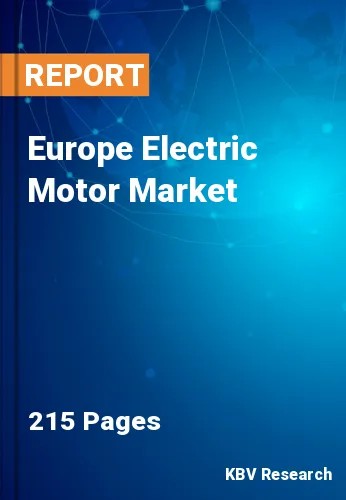The Europe Electric Motor Market would witness market growth of 6.5% CAGR during the forecast period (2023-2030). In the year 2020, the Europe market's volume surged to 41,652.9 thousand units, showcasing a growth of 7.0% (2019-2022).
Government regulations and standards play a significant role in shaping the market. Regulations often mandate using energy-efficient motors to reduce energy consumption and environmental impact. advancements in motor design, materials, and manufacturing techniques have improved efficiency, reliability, and performance. Innovations like magnet-free and superconducting motors are emerging, offering exciting prospects for the industry.
Integrating the Internet of Things (IoT) and smart technologies is a prominent trend in the market. IoT-connected motors enable remote monitoring, diagnostics, and predictive maintenance. This connectivity enhances operational efficiency and minimizes downtime. The push for higher energy efficiency has driven the development and adoption of high-efficiency motors. These motors not only meet or exceed regulatory standards but also result in significant energy cost savings for users. With concerns about the supply chain and environmental impact of rare-earth magnets, manufacturers are exploring alternative materials and technologies to reduce dependency on these critical components. Permanent magnet motors and reluctance motors are emerging as alternatives.
According to the International Trade Administration (ITA), the French aerospace sector in 2019 grew to €74.3 billion, a 13% increase over 2018. The aerospace and defense aerospace industry exported approximately 84% of its consolidated turnover. The aerospace industry in France is increasingly adopting electric propulsion systems, which rely on high-performance electric motors. These systems are used in electric aircraft, vertical takeoff and landing (eVTOL), and drone vehicles. The factors mentioned above will propel the market growth in this region.
The Germany market dominated the Europe Electric Motor Market by Country in 2022 and would continue to be a dominant market till 2030; thereby, achieving a market value of $11,640.1 million by 2030. The UK market is showcasing a CAGR of 5.6% during (2023 - 2030). Additionally, The France market would register a CAGR of 7.3% during (2023 - 2030).
Based on Output Power, the market is segmented into Fractional Horsepower (FHP), and Integral Horsepower (IHP). Based on Type, the market is segmented into AC Motor (Induction, Synchronous), DC Motor (Brushless, Brushed), and Hermetic Motor. Based on End User, the market is segmented into Motor Vehicles, Industrial Machinery, HVAC Equipment, Household Appliances, Aerospace & Transportation, Others. Based on countries, the market is segmented into Germany, UK, France, Russia, Spain, Italy, and Rest of Europe.
Free Valuable Insights: The Global Electric Motor Market will Hit $236.3 Billion by 2030, at a CAGR of 7.4%
The market research report covers the analysis of key stake holders of the market. Key companies profiled in the report include Robert Bosch GmbH, General Electric Company, Siemens AG, Hitachi, Ltd., Mitsubishi Electric Corporation, ABB Group, Denso Corporation, Magna International, Inc., Toshiba Corporation, Emerson Electric Co.
By Output Power (Volume, Thousand Units, USD Billion, 2019-2030)
By Type (Volume, Thousand Units, USD Billion, 2019-2030)
By End User (Volume, Thousand Units, USD Billion, 2019-2030)
By Country (Volume, Thousand Units, USD Billion, 2019-2030)
Our team of dedicated experts can provide you with attractive expansion opportunities for your business.

